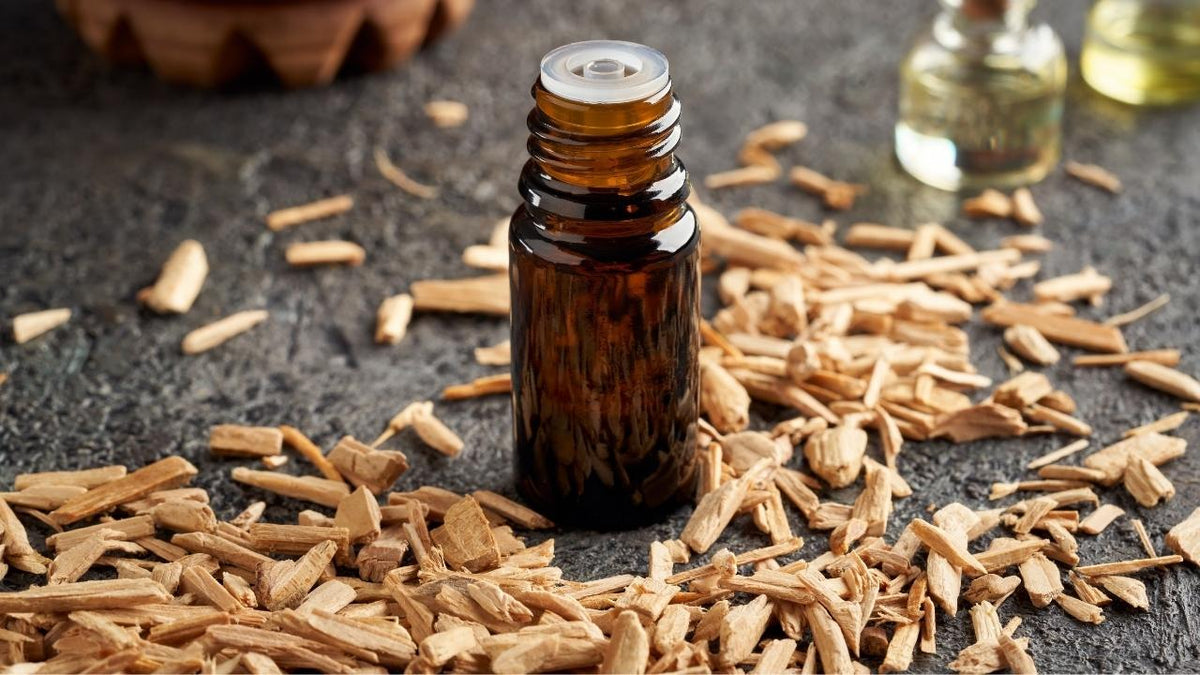
Featured Scent: What Does Cedarwood Smell Like?
|
|
Time to read: 4 min


|
|
Time to read: 4 min
Reminiscent of the great outdoors, cedarwood is a soft, woody scent incorporated in many of our luxury candles. If you’ve ever enjoyed a hike through a light-dappled evergreen forest with 100 feet tall coniferous trees, you may have already smelled cedarwood before.
Like the fragrance of aftershave in a vintage barbershop, Cedarwood has a pleasantly warm and complex smell that's often paired with citrus and floral notes to produce luxuriously warm and inviting aromas.
Cedarwood is, as you would guess, the wood of cedar trees. Found all over the world, these coniferous evergreens can live up to 300 years and grow over 100 feet tall.
There are many types of cedar trees, but only 4 are classified as "true cedars" from the genus Cedrus. Examples of true cedars include Atlas Cedar (Cedrus atlantica) and Himalayan Cedar (Cedrus deodara).
Surprisingly, the most common cedarwood essential oil doesn't come from a true cedar; it comes from Virginian Cedarwood (Juniperus virginiana), also known as Red Cedar or Eastern Red Cedar.
Other examples of common false cedars include Texas Cedarwood, Western Red Cedar (Thuja plicata), Northern White Cedar (Thuja occidentalis), and Alaskan Yellow Cedar (Cupressus nootkatensis).
Cedarwood has been used historically in a number of different ways. The Egyptians used it as an ingredient for embalming, the Tibetans used cedarwood oil in spiritual ceremonies, and the Romans used cedar wood to build ships.
The Arabic and Greek meanings of the scientific name translate to “sacred tree of the divine will." The Native American Cherokee tribe believed that the human spirit was hidden in the core of the cedar tree.
Nowadays, cedarwood is a popular ingredient in the fragrance industry and an important base note for several of our luxury candle fragrances.
Cedarwood is a member of the woody fragrance family. Wood material notes produced from trees, leaves, resin, bark, and roots give these scents a rich and earthy elegance.
This refined aroma has a bit of nostalgic component for many people, bringing you back to the years of sharpening Dixon Ticonderoga No. 2 pencils whilst counting down the hours until the end of the school day. Or perhaps it conjures memories of your father opening his beloved cigar box early in the morning while pondering over his daily New York Times crossword puzzle.
We like to describe the gorgeous smell of cedarwood as:
While some members of the woody fragrance family have a delicate quality to them, cedarwood consistently serves as an excellent mid or base note, balancing out the sweeter fragrance notes in your favorite candles.
Unlike other woody scents like sandalwood, patchouli, and pine, cedarwood has a soft and camphoraceous smell that's prickly, cooling, and slightly mothball-like.
Cedarwood is less minty than pine, and is less musky than patchouli. It contains less sweetness and smokiness than sandalwood. However, when the two scents are paired together, cedarwood provides a deep base scent that rounds out sandalwood’s slight sweetness in a seamless manner.
At the Harlem Candle Company, we love the way that soft, woody aroma of cedarwood complements beautiful floral and citrus scents like orange, grapefruit, ginger, ylang ylang, and bergamot.
You can experience cedarwood in a number of fine perfumes, such as:
The essential oil of cedarwood is extracted from all parts of the evergreen tree, including it’s needles, leaves, bark, and berries. Cedarwood oil can be extracted by steam distillation, carbon dioxide distillation, or cold pressing.
The main chemical components of cedarwood are cedrol, cedrene, and thujopsene.
By itself, cedrol has a faintly sweet aroma. Both cedrol and thujopsene are responsible for the woody quality of cedarwood, while cedrene brings in elements of freshness.
It’s important to note that different types of cedar trees produce different essential oils due to the slightly varying chemical components found within.
The most common cedarwood essential oil produced in the United States comes from the Virginian cedar tree, also referred to as the red cedar. The wood of red cedar has the odor of a birdhouse or a closet liner. Its name is actually a misnomer — technically, the red cedar (Juniperus virginiana) is a juniper tree.
Atlas cedarwood is another tree used in the making of cedarwood essential oils. A true cedar tree, this conifer is less widely used in the United States than the red cedar tree because it is considered an endangered species.
In aromatherapy, the stress relieving abilities of cedarwood can reduce anxiety and decrease hyperactivity.
One study on animals found that this could largely be thanks to the aforementioned chemical, cedrol, which is known to have soothing effects on mood.
As a sedative, cedarwood can induce the release of serotonin, which can help those who struggle with insomnia produce the melatonin needed for a good night’s rest.
Those who grapple with depression, stress management, and chronic anxiety may experience positive effects by incorporating the soothing scent of cedarwood into their lives.
Our "Medieval Garden" Luxury Candle features a glorious base note of cedarwood and pays tribute to the art and architecture of medieval Europe.
This fragrance features a vibrant opening of juicy pomegranate, a symbol of joyful fruitfulness, melding beautifully with the calming and cleansing effect of frankincense and myrrh.
Rose de Mai, black currant, and olibanum form a dramatic heart, as resinous cedarwood tempered by golden amber and musk, brings a warm, sensual finish to this very personal spiritual blend
Cedarwood is also a component of our "Holiday" Luxury Candle. This fragrance was inspired by Billie Holiday’s favorite perfume, Emeraude.
It features an aromatic green blend of fresh Winter spruce, pine needles, mint-infused eucalyptus, fir balsam and spicy cedarwood developing into a feminine heart of ethereal blue hyacinth. Strong and full-bodied, yet fragile and dreamy… just like Lady Day herself.
We hope this article inspired you to bring the magnificent smell of cedarwood scent into your home!




